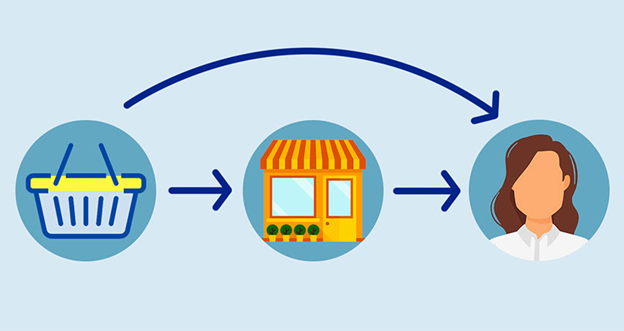Direct-to-Consumer Fashion Brands: Disrupting Traditional Retail Models
The rise of Direct-to-Consumer (D2C) fashion brands has fundamentally reshaped the retail landscape, challenging traditional models that relied on department stores and third-party retailers. These D2C brands, such as Warby Parker, Everlane, and Allbirds, have leveraged the power of e-commerce to sell directly to consumers, bypassing intermediaries and creating more personalized shopping experiences. By cutting out the middleman, D2C brands have been able to offer better pricing, greater control over their brand narrative, and stronger relationships with their customers.
In this article, we explore how D2C fashion brands are disrupting traditional retail models, the benefits they offer to both businesses and consumers, and what this shift means for the future of the fashion industry.
The D2C Business Model: A New Approach to Fashion Retail
Traditional fashion retail has long relied on a multi-tiered approach in which brands sell their products through department stores, boutiques, or online marketplaces. These intermediaries take a cut of the profits, which often results in higher retail prices for consumers. The D2C model flips this system on its head by allowing fashion brands to sell their products directly to consumers, typically through their own online platforms.
Key components of the D2C business model include:
- Control Over Branding and Messaging: By eliminating third-party retailers, D2C brands gain full control over their brand identity and storytelling. They can directly engage with their audience through marketing campaigns, social media, and their websites, building deeper connections with customers.
- Price Transparency and Affordability: Without the added costs of wholesalers and retailers, D2C brands can offer high-quality products at lower prices. Many D2C brands emphasize transparency in their pricing, showing consumers exactly how much they save by cutting out middlemen.
- Data-Driven Decisions: D2C brands benefit from having direct access to customer data, enabling them to make more informed decisions about product development, marketing strategies, and inventory management. This data-driven approach helps brands better understand their customers’ preferences and adapt quickly to changing trends.
- Personalization: D2C brands are able to offer more personalized shopping experiences, as they control the entire customer journey. Many brands use tools such as AI-driven product recommendations, curated collections, and virtual stylists to create customized experiences for shoppers.
How D2C Fashion Brands Are Disrupting Traditional Retail
The D2C model has had a profound impact on the traditional fashion retail sector, forcing established brands to rethink their strategies and adapt to new consumer expectations. Here’s how D2C brands are disrupting the industry:
- Bypassing Brick-and-Mortar Stores
D2C brands have largely thrived online, avoiding the high costs associated with physical stores. Traditional retailers, on the other hand, have long been dependent on brick-and-mortar locations, which come with significant overhead expenses such as rent, utilities, and staffing. As e-commerce continues to grow, many D2C brands are proving that physical stores are no longer a necessity for success in fashion retail.
While some D2C brands do experiment with pop-up shops or small flagship stores, the bulk of their sales occur online. This has allowed them to reach a global audience without the need for extensive retail networks.
- Disrupting Price Structures
By eliminating middlemen, D2C brands are able to offer premium products at more accessible prices. This has put pressure on traditional retailers, who often rely on markups to cover the costs of wholesale relationships. D2C brands like Everlane have built their businesses on price transparency, providing consumers with a breakdown of production costs and showing them exactly what they’re paying for.
This transparency resonates with modern consumers, many of whom are looking for brands that align with their values and offer fair pricing. Traditional retailers, accustomed to higher profit margins, have struggled to compete with these more affordable yet high-quality offerings.
- Agile Supply Chains and Faster Response to Trends
Traditional retailers typically operate on a seasonal cycle, releasing collections months in advance and predicting trends for the future. D2C brands, on the other hand, have more agile supply chains that allow them to respond quickly to emerging trends. This flexibility enables D2C brands to produce smaller, more frequent collections, reducing excess inventory and allowing them to stay relevant in a fast-moving fashion landscape.
Many D2C brands also use “on-demand” production models, where items are only produced once an order is placed. This reduces waste and ensures that production aligns more closely with actual demand.
- Direct Customer Relationships
Perhaps the most significant advantage of the D2C model is the direct relationship that brands build with their customers. By cutting out intermediaries, D2C brands can engage with consumers in a more meaningful way, fostering loyalty and repeat business. These relationships are often nurtured through personalized email marketing, social media engagement, and exceptional customer service.
D2C brands also benefit from immediate feedback on their products, allowing them to make adjustments and improvements based on customer input. This direct feedback loop is a powerful tool for brands looking to innovate and grow.
Challenges Facing D2C Fashion Brands
While the D2C model has disrupted traditional retail in many ways, it also comes with its own set of challenges. Building a successful D2C brand requires significant investment in technology, marketing, and customer acquisition. Without the support of established retail networks, D2C brands must rely on digital marketing and social media to build their audiences.
Additionally, as more brands adopt the D2C model, competition in the online space has intensified. Brands are finding it harder to stand out and capture consumer attention, leading to rising customer acquisition costs. Moreover, scaling a D2C brand often requires a careful balance between maintaining high-quality products and meeting growing demand.
The Future of Fashion Retail: D2C and Beyond
The success of D2C fashion brands has undoubtedly reshaped the retail landscape, but traditional retailers are not standing still. Many established fashion brands are adopting elements of the D2C model by enhancing their online presence, focusing on personalization, and building stronger direct relationships with consumers. Omnichannel strategies, which integrate both online and offline experiences, are becoming increasingly popular as brands seek to offer customers a seamless shopping experience.
Furthermore, platforms like CraneFest.com have highlighted the growing importance of sustainability and ethical practices in the fashion industry, areas where many D2C brands excel. Consumers are increasingly looking for brands that not only offer great products but also align with their values, whether through sustainable sourcing, ethical labor practices, or transparency in pricing.
Publications like JudgeNews.net have also noted the increasing role of regulatory changes and consumer pressure on traditional retailers to adopt more transparent and customer-focused models, much like D2C brands.
Conclusion: Disrupting Retail for the Better
Direct-to-consumer fashion brands have disrupted traditional retail by offering consumers a more personalized, affordable, and transparent shopping experience. By leveraging e-commerce and cutting out intermediaries, these brands have built stronger relationships with their customers while staying agile in a rapidly changing market. As the D2C model continues to gain traction, both new and established fashion brands will need to adapt to meet the evolving expectations of modern consumers.
The future of fashion retail is likely to involve a blend of D2C innovation and traditional retail expertise. Brands that successfully integrate the strengths of both models—providing high-quality products, exceptional customer service, and ethical practices—will be best positioned to thrive in the competitive fashion industry.













Post Comment